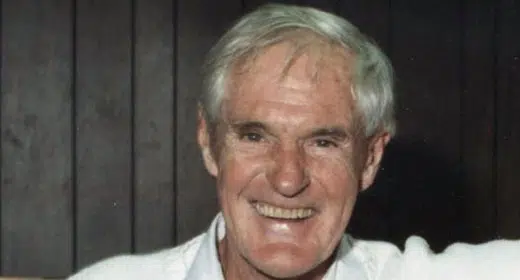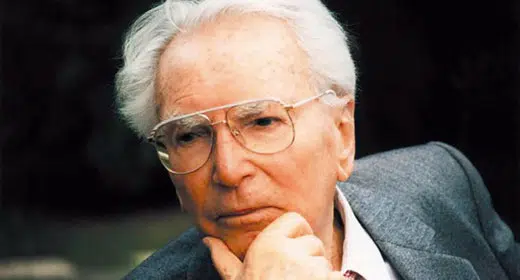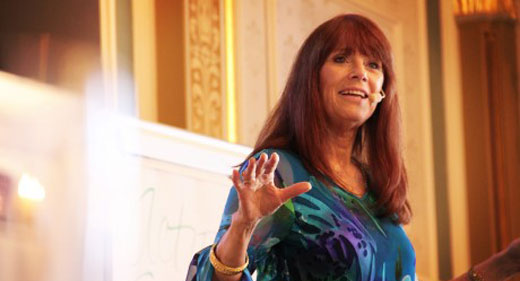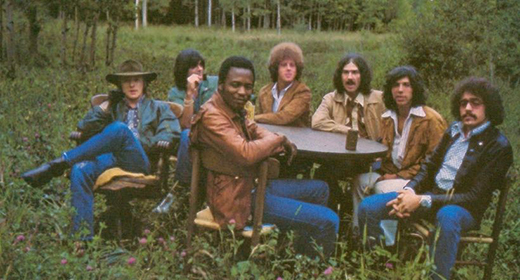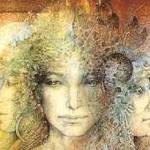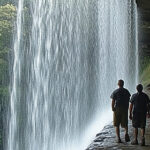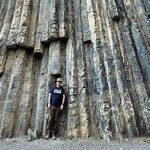Stanislav Grof, M.D., Ph.D.: by Alvaro Jardim: What is the innovation that transpersonal psychology and your work bring to psychology as a science?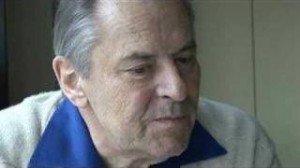 The famous American psychologist Abraham Maslow called transpersonal psychology the Fourth Force in psychology, following behaviorism, Freudian psychoanalysis, and humanistic psychology. In the first half of the century, American and European psychology and psychiatry were dominated exclusively by behaviorism and psychoanalysis. Humanistic psychology, founded by Abraham Maslow and Anthony Sutich, arose as a reaction to the inadequacies and limitations of the first two forces.
The famous American psychologist Abraham Maslow called transpersonal psychology the Fourth Force in psychology, following behaviorism, Freudian psychoanalysis, and humanistic psychology. In the first half of the century, American and European psychology and psychiatry were dominated exclusively by behaviorism and psychoanalysis. Humanistic psychology, founded by Abraham Maslow and Anthony Sutich, arose as a reaction to the inadequacies and limitations of the first two forces.
Humanistic psychology corrected the tendency of behaviorism to ignore consciousness and introspection and formulate theories about the human psyche exclusively from the observation of behavior, particularly behavior of animals, such as rats and pigeons. Humanistic psychology also emphasized the need to move beyond the tendency of Freudian analysis to draw all the data from the study of psychopathology and it included normal and supernormal individuals as research subjects.
The focus of humanistic studies were higher human values and the tendency to pursue them, Maslow’s “metavalues” and “metamotivations,” leading to what Maslow called “self-actualization” and “self-realization.” Humanistic psychology also provided a broad umbrella for the development of a new revolutionary form of psychotherapies, called “experiential therapies,” such as Gestalt practice, bioenergetics, or Alexander technique.
Transpersonal psychology then added yet another important dimension, that is, recognition of spirituality as a legitimate and important aspect of the human psyche. This is a radical difference from academic psychology that dismisses spirituality of any form and any level of sophistication as superstition, primitive magical thinking, emotional immaturity, or pathology. Another important aspect of transpersonal psychology is that it studies the entire spectrum of human experience, including non-ordinary states of consciousness, particularly various forms of mystical experiences.
Transpersonal psychology was deeply influenced by the experiences and observations from the study of non-ordinary states of consciousness, such as those that occur during shamanic practices, aboriginal rites of passages, the ancient mysteries of death and rebirth, psychedelic sessions, and various forms of spiritual practice (including different schools of yoga, Buddhism, Taoism, Sufism, Christian mysticism, etc.). And this is where my own work comes in.
My own contribution to transpersonal psychology (besides giving it the name “transpersonal”) came from four decades of systematic exploration of the therapeutic, transformative, and evolutionary potential of non-ordinary states of consciousness. I spent approximately half of this time conducting therapy with psychedelic substances, first in Czechoslovakia in the Psychiatric Research Institute in Prague, and then in the United States, at the Maryland Psychiatric Research Center in Baltimore, where I participated in the last surviving American psychedelic research program.
Since 1975, I have worked with holotropic breathwork, a powerful method of therapy and self-exploration that I have developed jointly with my wife Christina. Over the years, I have also supported many people undergoing psychospiritual crises, or “spiritual emergencies” as Christina and I call them. The common denominator of these three situations is that they involve nonordinary states of consciousness or, more specifically, an important subcategory of them that I call holotropic. In psychedelic therapy, these states are induced by administration of mind-altering substances or plants. In holotropic breathwork, consciousness is changed by a combination of faster breathing, evocative music, and energy-releasing bodywork. In spiritual emergencies, holotropic states occur spontaneously, in the middle of everyday life, and their cause is usually unknown. In addition, I have been more peripherally involved in many disciplines that are, more or less directly, related to nonordinary states of consciousness. I have participated in sacred ceremonies of native cultures in different parts of the world, had contact with North American, Mexican, and South American shamans, and exchanged information with many anthropologists. I have also had extensive contact with representatives of various spiritual disciplines, including Vipassana, Zen, and Vajrayana Buddhism, Siddha Yoga, Tantra, and the Christian Benedictine order.
Another area that has received much of my attention has been thanatology, the young discipline studying near-death experiences and the psychological and spiritual aspects of death and dying. I participated in the late 1960s and early 1970s in a large research project studying the effects of psychedelic therapy in individuals dying of cancer. I should also add that I have had the privilege of personal acquaintance and experience with some of the great psychics and parapsychologists of our era, pioneers of laboratory consciousness research, and therapists who developed and practiced powerful forms of experiential therapy that induce nonordinary states of consciousness.
After all these years of studying various forms of non-ordinary states of consciousness, I came to the conclusion that the experiences and observations from this work show an urgent need for a profound revision of our thinking in psychiatry, psychology, and psychiatry. A revision that in its depth and scope would be comparable with what happened in physics in the first three decades of the twentieth century – the shift from Newtonian physics to the theories of relativity and then to quantum physics. I have described these implications in my last book Psychology of the Future: Lessons from Modern Consciousness Research.
You and your wife have developed a method of therapy and self-exploration that you call holotropic breatwork. Can you describe it?
Holotropic breathwork is a method that uses the healing and transformative potential of non-ordinary states of consciousness. It induces these states by a combination of very simple means – accelerated breathing, evocative music, and a technique of bodywork that helps to release residual bioenergetic and emotional blocks. It provides access to very deep levels of the unconscious psyche, such as repressed memories from childhood and infancy, birth and pre-natal period, and even an entire spectrum of experiences we call transpersonal – mystical states, past life experiences, encounters with archetypal figures, visits to mythological realms of the psyche, and so on. In its theory and practice, holotropic breathwork brings together and integrates various elements from ancient and aboriginal traditions, Eastern spiritual philosophies, and Western depth psychology.
In which cases can holotropic breathwork be helpful and when not?
Holotropic breathwork cannot influence mental and emotional problems that have a clearly organic, biological basis, such as cerebral infections, cardiovascular, degenerative, or toxic processes. It also has physical contraindications, such as serious cardiovascular problems, debilitating diseases, pregnancy, or epilepsy. In case of serious emotional problems, the breathwork has to be used in the context of a therapeutic relationship and available 24-hour residential care.
On the positive side, we have seen over the years numerous instances when participants in the workshops and the training were able to break out of depression that had lasted several years, overcome various phobias, free themselves from consuming irrational feelings, and radically improve their self-confidence and self-esteem. We have also witnessed on many occasions disappearance of severe psychosomatic pains, including migraine headaches, and radical and lasting improvements or even complete clearing of psychogenic asthma. On many occasions, participants in the training or workshops favorably compare their progress in several holotropic sessions to years of verbal therapy.
When we talk about evaluating the efficacy of powerful forms of experiential psychotherapy, such as work with psychedelics or holotropic breathwork, it is important to emphasize certain fundamental differences between these approaches and verbal forms of therapy. Verbal psychotherapy often extends over a period of years and major exciting breakthroughs are rare exceptions rather than commonplace events. When changes of symptoms occur, it happens on a broad time scale and it is difficult to prove their causal connection with specific events in therapy or the therapeutic process in general. By comparison, in a psychedelic or holotropic session, powerful changes can occur in the course of a few hours and they can be convincingly linked to a specific experience.
The changes observed in holotropic therapy are not limited to conditions traditionally considered emotional or psychosomatic. In many cases, holotropic breathwork sessions lead to dramatic improvement of physical conditions that in medical handbooks are described as organic diseases. Among them was clearing of chronic infections (sinusitis, pharyngitis, bronchitis, and cystitis) after bioenergetic unblocking opened blood circulation in the corresponding areas. Unexplained to this day remains solidification of bones in a woman with osteoporosis that occurred in the course of holotropic training.
We have also seen restitution of full peripheral circulation in several people suffering from Raynaud’s disease, a disorder that involves coldness of hands and feet accompanied by dystrophic changes of the skin. In several instances, holotropic breathwork led to striking improvement of arthritis. In all these cases, the critical factor conducive to healing seemed to be release of excessive bioenergetic blockage in the afflicted parts of the body followed by vasodilation. The most astonishing observation in this category was a dramatic remission of advanced symptoms of Takayasu arteritis, a disease of unknown etiology, characterized by progressive occlusion of arteries in the upper part of the body. It is a condition that is usually considered progressive, incurable, and potentially lethal.
In a few instances, the therapeutic potential of holotropic breathwork was confirmed in clinical studies conducted by practitioners who had been trained by us and independently use this method in their work. We have also had on many occasions the opportunity to receive informal feedback from people years after their emotional, psychosomatic, and physical symptoms improved or disappeared after holotropic sessions in our training or in our workshops. This has shown us that the improvements achieved in holotropic sessions are often lasting. It is anticipated that the efficacy of this interesting method of self-exploration and therapy will be in the future confirmed by welldesigned clinical research.
What has been the impact of your ideas in the academic community?
My work has been received very enthusiastically in certain scientific circles. Surprisingly, the first positive responses came primarily from quantum-relativistic physicists, from people like Fritjof Capra, Fred Wolf, Saul Paul Siraq, Nick Herbert, David Bohm, and more recently Amit Goswami. These scientists are aware of the fact that the old monistic materialistic philosophy and the Cartesian-Newtonian image of the universe dominating academic science are hopelessly outdated.
My ideas have also been very positively accepted by avantgarde scientists representing various other disciplines of the new paradigm – biology, holographic approach to the brain, systems theory, thanatology, parapsychology, etc. Most of the resistance comes from the academic circles that are generally closed to all these new currents in science. Many traditional scientists hang on to the outdated paradigms in a way that can be called “scientism” rather than science. Their attitude resembles fundamentalist approach to religions; they have already made up their mind about what the world is like and are completely impervious to evidence of any kind and scope.
There is something that people in the transpersonal movement find very exciting. In the last several decades, whenever there has been some scientific breakthrough, it always proved to be a shocking surprise for the representatives of the old thinking, but has been welcomed and embraced by transpersonal psychologists as compatible with their own findings. This happened with philosophical implications of quantum-relativistic physics, Karl Pribram’s holographic model of the brain, David Bohm’s theory of holomovement, Ilya Prigogine’s theory of dissipative structures, Rupert Sheldrake’s concept of morphogenetic fields, Ervin Laszlo’s psi-field, and many others. If this trend continues, it should not last a very long time till the new thinking gains sufficient ground. I certainly hope it will happen before it is too late. It might be our only real hope in the crisis we are facing in our troubled world.
Why do you attribute special attention to spiritual themes in your work?
My consciousness research has convinced me that that spirituality is not only a very real and legitimate dimension of the human psyche and the universal order, but also one of critical importance. Andrew Weil, a well-known American physician expressed in his book The Natural Mind the opinion that the need for the mystical experience is the most powerful drive in the human psyche, much more powerful than sexuality that has been so strongly emphasized by Freudian psychoanalysis.
And I could not agree more. I believe that current attitude toward spirituality found in today’s materialist science and modern psychology is a serious and tragic error. The Western industrial civilization is paying a heavy toll for having rejected and lost genuine spirituality. I believe it is probably one of the main reasons of today’s global crisis; the atheism bred by materialistic science contributes significantly to the fact that modern humanity is on a destructive and a suicidal course.
Is there any scientific way to approach spirituality?
This is exactly what transpersonal psychology is attempting to do – to show that science and spirituality are not incompatible, but are two complementary approaches to the understanding of reality. Transpersonal psychology is a discipline that integrates science and spirituality, Eastern philosophy and Western pragmatism, ancient wisdom and modern science. But to do be able to this, we have to differentiate clearly spirituality from religion and science from scientism.
Spirituality is based on direct experiences of nonordinary aspects and dimensions of reality. It does not require a special place or an officially appointed person mediating contact with the divine. The mystics do not need churches or temples. The context in which they experience the sacred dimensions of reality, including their own divinity, are their bodies and nature. And instead of officiating priests, they need a supportive group of fellow seekers or the guidance of a teacher who is more advanced on the inner journey than they are themselves. Spirituality involves a special kind of relationship between the individual and the cosmos and is, in its essence, a personal and private affair.
By comparison, organized religion is institutionalized group activity that takes place in a designated location, a temple or a church, and involves a system of appointed officials who might or might not have had personal experiences of spiritual realities. Once a religion becomes organized, it often completely loses the connection with its spiritual source and becomes a secular institution that exploits human spiritual needs without satisfying them.
Organized religions tend to create hierarchical systems focusing on the pursuit of power, control, politics, money, possessions, and other secular concerns. Under these circumstances, religious hierarchy as a rule dislikes and discourages direct spiritual experiences in its members, because they foster independence and cannot be effectively controlled. When this is the case, genuine spiritual life continues only in the mystical branches, monastic orders, and ecstatic sects of the religions involved.
There is no doubt that the dogmas of organized religions are generally in fundamental conflict with science, whether this science uses the mechanistic-materialistic model or is anchored in the emerging paradigm. However, the situation is very different in regard to authentic mysticism based on spiritual experiences. The great mystical traditions have amassed extensive knowledge about human consciousness and about the spiritual realms in a way that is similar to the method that scientists use in acquiring knowledge about the material world. It involves methodology for inducing transpersonal experiences, systematic collection of data, and intersubjective validation.
Spiritual experiences, like any other aspect of reality, can be subjected to careful open-minded research and studied scientifically. There is nothing unscientific about unbiased and rigorous study of transpersonal phenomena and of the challenges they present for materialistic understanding of the world. Only such an approach can answer the critical question about the ontological status of mystical experiences: Do they reveal deep truth about some basic aspects of existence, as maintained by perennial philosophy, or are they products of superstition, fantasy, or mental disease, as Western materialistic science sees them?
What is the importance of perinatal issues in the formation of personality?
The amount of emotional and physical stress involved in childbirth clearly surpasses that of any postnatal trauma in infancy and childhood discussed in psychodynamic literature, with the possible exception of extreme forms of physical abuse. Various forms of experiential psychotherapy have amassed convincing evidence that biological birth is the most profound trauma of our life and an event of paramount psychospiritual importance. It is recorded in our memory in miniscule details down to the cellular level and it has profound effect on our psychological development.
Conscious reliving and integration of the trauma of birth plays an important role in the process of experiential psychotherapy and self-exploration. The experiences originating on the perinatal level of the unconscious appear in four distinct experiential patterns, each of which is characterized by specific emotions, physical feelings, and symbolic imagery. These patterns are closely related to the experiences that the fetus has before the onset of birth and during the three consecutive stages of biological delivery.
At each of these stages, the child experiences a specific and typical set of intense emotions and physical sensations. These experiences leave deep unconscious imprints in the psyche that later in life have an important influence on the life of the individual. I refer to these four dynamic constellations of the deep unconscious as Basic Perinatal Matrices or BPMs.
Reinforced by emotionally meaningful experiences from infancy, childhood, and later life arranged in COEX systems, perinatal matrices can shape our perception of the world, profoundly influence our everyday behavior, and contribute to the development of various emotional and psychosomatic disorders. On a collective scale, we can find echoes of perinatal matrices in religion, art, mythology, philosophy, and various forms of social and political psychology and psychopathology.
Is there any relation between your theory and Freud and Jung’s theories?
The expanded cartography of the psyche that I have developed on the basis of my study of non-ordinary states of consciousness integrates Freudian psychoanalysis and Jung’s analytical psychology, but includes also Otto Rank’s theory of the birth trauma and Wilhelm’s Reich understanding of the bioenergetic aspects of the psyche. All these are included in my cartography that has three levels or domains.
The most superficial of them is the biographical-recollective level that my model shares with Freudian psychoanalysis and mainstream psychology and psychiatry. In traditional psychiatry and psychology, the human psyche is actually limited to this level. My cartography of the psyche has, in addition, two transbiographical domains. The perinatal level, related to the trauma of birth, is closely related to (although not identical with) Otto Rank’s psychology. The transpersonal level then includes the Jungian collective unconscious in its historical and archetypal (mythological) aspects, and some additional elements not described by Jung.
Is there any difference between spirituality and the unconscious?
There certainly is a connection between spirituality and the unconscious. Genuine spirituality is based on experiences involving dimensions of reality of which we are not aware in our ordinary state of consciousness and that, in this sense, are unconscious. But not all unconscious experiences are spiritual in nature and have what C. G. Jung called “numinous quality,” for example the contents of the Freudian individual unconscious (repressed memories from infancy and childhood) and the reliving of the trauma of birth. Also, many spiritual experiences, although technically unconscious, should be more appropriately called “superconscious.”
Could you explain more about non-ordinary states of consciousness?
As I mentioned before, I have spent more than forty years conducting research of nonordinary states of consciousness. My primary interest has been to focus on what we call the “heuristic” aspects of these states; that is, on what they can contribute to our understanding of the nature of consciousness and of the human psyche. Since my original training was as clinical psychiatrist, I have also paid special attention to the healing, transformative, and evolutionary potential of these experiences. For this purpose, the term nonordinary states of consciousness is too broad and general. It includes a wide range of conditions that are of little or no interest from a heuristic or therapeutic perspective.
Consciousness can be profoundly changed by a variety of pathological processes — by cerebral traumas, by intoxications with poisonous chemicals, by infections, or by degenerative and circulatory processes in the brain. Such conditions can certainly result in profound mental changes that would relegate them to the category of “nonordinary states of consciousness.” However, such impairments cause “trivial deliria” or “organic psychoses,” states that are very important clinically, but are not relevant for our discussion. People suffering from such states are typically disoriented; they do not know who and where they are and what date it is. In addition, their intellectual functions are significantly impaired and they typically have subsequent amnesia for their experiences.
I have focused in my work on a large and important subgroup of nonordinary states of consciousness which significantly differ from the rest and represent an invaluable source of new information about the human psyche in health and disease. They also have a remarkable therapeutic and transformative potential. Over the years, daily clinical observations convinced me about the extraordinary nature of these experiences and about the far-reaching implications they have for the theory and practice of psychiatry. I found it difficult to believe that contemporary psychiatry does not recognize their specific features and does not have a special name for them.
Because I feel strongly that they deserve to be distinguished from the rest and placed into a special category, I have coined for them the name holotropic (Grof 1992). This composite word literally means “oriented toward wholeness” or “moving in the direction of wholeness” (from the Greek holos = whole and trepein = moving toward or in the direction of something). It suggests that in our everyday state of consciousness we identify with only a small fraction of who we really are. In holotropic states, we can transcend the narrow boundaries of the body ego and reclaim our full identity.
In holotropic states, consciousness is changed qualitatively in a very profound and fundamental way, but it is not grossly impaired like in the organically caused conditions. We typically remain fully oriented in terms of space and time and do not completely lose touch with everyday reality. At the same time, our field of consciousness is invaded by contents from other dimensions of existence in a way that can be very intense and even overwhelming. We thus experience simultaneously two very different realities, “have each foot in a different world.”
Holotropic states are characterized by dramatic perceptual changes in all sensory areas. When we close our eyes, our visual field can be flooded with images drawn from our personal history and from the individual and collective unconscious. We can have visions and experiences portraying various aspects of the animal and botanical kingdoms, nature in general, or of the cosmos. Our experiences can take us into the realm of archetypal beings and mythological regions. When we open the eyes, our perception of the environment can be illusively transformed by vivid projections of this unconscious material. This can be accompanied by a wide range of experiences engaging other senses – various sounds, physical sensations, smells, and tastes.
The emotions associated with holotropic states cover a very broad spectrum that typically extends far beyond the limits of our everyday experience, both in their nature and intensity. They range from feelings of ecstatic rapture, heavenly bliss, and “peace that passeth all understanding” to episodes of abysmal terror, murderous anger, utter despair, consuming guilt, and other forms of unimaginable emotional suffering. Extreme forms of these emotional states match the descriptions of the paradisean or celestial realms and of hells described in the scriptures of the great religions of the world.
A particularly interesting aspect of holotropic states is their effect on thought processes. The intellect is not impaired, but functions in a way that is significantly different from its everyday mode of operation. While we might not be able to rely on our judgment in ordinary practical matters, we can be literally flooded with remarkable valid information on a variety of subjects. We can reach profound psychological insights concerning our personal history, unconscious dynamics, emotional difficulties, and interpersonal problems. We can also experience extraordinary revelations concerning various aspects of nature and of the cosmos that by a wide margin transcend our educational and intellectual background. However, by far the most interesting insights that become available in holotropic states revolve around philosophical, metaphysical, and spiritual issues.
We can experience sequences of psychological death and rebirth and a broad spectrum of transpersonal phenomena, such as feelings of oneness with other people, nature, the universe, and God. We might uncover what seem to be memories from other incarnations, encounter powerful archetypal figures, communicate with discarnate beings, and visit numerous mythological landscapes. Holotropic experiences of this kind are the main source of cosmologies, mythologies, philosophies, and religious systems describing the spiritual nature of the cosmos and of existence. They are the key for understanding the ritual and spiritual life of humanity from shamanism and sacred ceremonies of aboriginal tribes to the great religions of the world.
You have done research on the use of LSD. What are your discoveries and conclusions?
I spent over twenty years conducting research in psychedelic therapy, both in Czechoslovakia and in the United States. As a result I feel great awe and respect in relation to these substances – what they can do both on the positive and negative side. It is important to emphasize that they are powerful tools that have no intrinsic beneficial or detrimental properties. The result, like with everything else from a knife to atomic energy, depends on the human use.
In case of psychedelics, the results depends on what we call “set and setting” – who administers them to whom under what circumstances and with what intention. They can be used as a chemical weapon or means for brainwashing, as powerful healing agents, or as sacraments that can facilitate life-transforming spiritual experiences.
Is there any connection between your research and Timothy Leary’s work?
Not really. We have met on a number of occasions, first in 1965 when I visited him in Millbrook and later in several conferences where both of us were presenters, and also during his visits at the Esalen Institute in Big Sur, California. But our approach to psychedelics was very different. He was a colossal one-man experiment, having taken LSD over thousand times and, with the exception of his early work at Harvard, his experiences with others were in a wild, unsupervised context. He was a brilliant thinker, but remained in his heart an antiestablishment Irish rebel, nonconformist, and “agent provocateur.”
I have personally used psychedelics for self-exploration, but on a much more conservative scale. Most of my psychedelic research was extensive work with others in a clinical context, first at the Psychiatric Research Institute in Prague, Czechoslovakia, and later at the Maryland Psychiatric Research Center in Baltimore, Maryland. I have tried to formulate my findings in scientific articles and books with the intention to make psychedelic therapy acceptable in mainstream psychiatry.
Would you, please, talk about your last book?
I wrote my last book, Psychology of the Future: Lessons from Modern Consciousness Research at the request of State University Press that had published several of my previous books. They wanted me to describe in a systematic and comprehensive way my observations from more than forty years of research of an important variety of nonordinary states of consciousness that I call holotropic (literally moving toward wholeness from the Greek holos = whole and trepein = to move in the direction of something). Examples of such states are trances of shamans or initiates in aboriginal rituals, states encountered in systematic meditative practice, spontaneous mystical episodes, psychedelic experiences, and self-exploration with powerful forms of experiential psychotherapy, for example primal therapy, rebirthing, and holotropic breathwork.
The book basically points out very specifically the different areas in which our thinking about the human psyche in health and disease would have to change radically to accommodate these new findings. I also outline in it the direction and nature of the necessary changes. Examples of such areas are the nature and origin of consciousness, architecture of emotional and psychosomatic disorders, and strategy of psychotherapy. Some other problems covered in the book are theory and practice of holotropic breathwork, philosophical and spiritual aspects of death, psychedelic therapy of cancer patients, metaphysical insights from consciousness research, and implications of this work for the global crisis.
Psychology of the Future has been or is being translated into various languages, including Spanish, Portuguese, French, Italian, Danish, Czech, Russian, Italian, Greek, and Turkish. It should be available in the German translation at the end of 2002. Because it is a comprehensive summary of the research I have over the last forty years, we will also be using it as a manual in our training in holotropic breathwork and transpersonal psychology.
I have heard rumors that you are planning to venture into an entirely new genre and present your research findings in the form of a science fiction novel. Is that true?
Yes. I have been working on this book for some time now and it is practically finished, at least in a rough form. My interest in writing it was actually inspired by the experience Christina and I had in 1982 in Hollywood when we were contacted by Douglas Trumbull, a special effects expert, who had worked with Stanley Kubrick on the movie 2001: The Space Odyssey and created the special effects for Andromeda Strain, Blade Runner, and Close Encounters. Doug was about to direct a Metro Goldwyn Mayer science fiction film entitled Brainstorm, in which he intended to combine the best special effects available at the time and the findings of modern consciousness research to portray the death experience. The movie had a stellar cast, including Natalie Wood, Christopher Walken, Louise Fletcher, and Cliff Robertson.
Doug heard that we had an audiovisual slide show called The Inner Journey that depicted the experience of psychospiritual death and rebirth and asked if he could see it. He liked it very much and hired Christina and myself as special consultants for Brainstorm. On this occasion, we conducted at the Esalen Institute in Big Sur, California, sessions of holotropic breathwork with the actors and other members of the film crew. This was suggested by the director and the producer as a unique opportunity for everybody involved in this project to personally experience non-ordinary states of consciousness, since these states played a critical role in the movie.
The original intention – to use the best special effects available at the time and the scientific knowledge about non-ordinary states of consciousness to convincingly portray the death experience – was severely compromised by the untimely tragic death of Natalie Wood and the ensuing withdrawal of financial support by MGM. As a result of this tragic circumstance, there was not enough money to create a high quality facsimile of holotropic states, the part of the movie we were most interested and involved in.
Since the time of this exciting but failed experiment, I have followed with great interest the rapid progress of special effects technology. I have been very impressed by its astonishing accomplishments and excited about its enormous potential. However, I have been equally profoundly disappointed by the fact that this extraordinary artistry has been used almost exclusively for portraying scenes of violence and destruction.
I became convinced that the nature and quality of special effects that have become available in recent years by the advances of digital imaging could open up radically new and exciting avenues in movie-making. There was no doubt in my mind that a marriage of consciousness research, transpersonal psychology, and modern special effects technology would make it possible not only to convincingly portray mystical experiences on the screen, but probably actually induce them in many of the spectators.
I felt strongly that movies using this strategy could become what is technically called “entheogenic” – inducing spiritual experiences (literally “awakening the divine within”). They would thus transcend the framework of entertainment and become important instruments in transformation and evolution of human consciousness, individually as well as collectively on a large scale. I started thinking about a story that could become the basis for a movie of this kind.
That, in a nutshell, was the chain of events that resulted in my attempt at something I have never done before – communicating the findings of my consciousness research in the form of a science fiction novel, Call of the Jaguar. The book differs from other examples of this genre by its strong focus on events occurring in the world of consciousness. Futuristic technology figures in the yarn, but its role is not as central as it is usually the case in sci/fi books.
If Call of the Jaguar has a central message, it is the idea that the current global crisis has deep psychospiritual roots and that it cannot be resolved without a deep inner transformation of humanity. The spiritual awakening of humanity through holotropic states is symbolized in the story by the effects of a magic ancient artifact discovered during excavations of a Mayan city. It is an exact life-size replica of the human skull made of quartz crystal. Those people who come into contact with the skull or its holographic or electronic images experience powerful changes in consciousness.
Envisioning an eventual screenplay, I included in the story vivid descriptions of holotropic experiences of various kinds – shamanic, psychedelic (induced by magic mushrooms and the “bufo elixir” extracted from toad skin), resulting from crystal scrying and visual effects, and those associated with traveling through hyperspace. None of the experiences included in the book are products of my imagination, they all are accurate descriptions of holotropic states that I have witnessed in others or experienced myself. Similarly, the descriptions of the effects these experiences have on the protagonists are not products of fiction and poetic license, but are realistically portrayed and based on actual observations. They reflect the enormous transformative potential of holotropic states.
You just mentioned the possible implications of your observations and modern consciousness research for the current global crisis. This is really fascinating. Can you say more about it?
I wrote about this for the first time in my book Realms of the Human Unconscious in 1975. Shortly after its publication, I received an enthusiastic letter from Lloyd de Mause, an American journalist and psychoanalyst. De Mause is one of the founders of psychohistory, a discipline that applies the findings of depth psychology to history and political science Lloyd de Mause was very interested in my findings concerning the trauma of birth and its possible sociopolitical implications, because they provided independent support for his own research. For some time, de Mause had been studying the psychological aspects of the periods preceding wars and revolutions.
It interested him how military leaders succeed in mobilizing masses of peaceful civilians and transform them practically overnight into killing machines. His approach was very original and creative; in addition to analysis of traditional historical sources, he drew data of great psychological importance from caricatures, jokes, dreams, personal imagery, slips of the tongue, side comments of speakers, and even doodles and scribbles on the edge of the rough drafts of political documents. By the time he contacted me, he had analyzed in this way seventeen situations preceding the outbreak of wars and revolutionary upheavals, spanning many centuries since antiquity to most recent.
He was struck by the extraordinary abundance of figures of speech, metaphors, and images related to biological birth in this material. Thus military leaders and politicians of all ages describing a critical situation or declaring war typically use terms that equally apply to perinatal distress. They accuse the enemy as choking and strangling us, squeezing the last breath out of our lungs, or confining us, and not giving us enough space to live (Hitler’s ‘Lebensraum’). Equally frequent are allusions to dark caves, tunnels, and confusing labyrinths, dangerous abysses into which we might be pushed, and the threat of engulfment by treacherous quicksand or a terrifying whirlpool.
Similarly, the offer of the resolution of the crisis comes in the form of perinatal images; the leader promises to rescue us from the ominous labyrinth, to lead us to the light on the other side of the tunnel, and to create a situation where everybody will again breathe freely after the dangerous aggressor and oppressor is overcome. Since his early research, de Mause has collected hundreds of posters, cartoons, speeches and other material from the times of crisis that support this hypothesis. Modern consciousness research has revealed even deeper sources of violence and greed on the transpersonal level, in the form of karmic matrices and destructive archetypal principles and themes.
The finding that human violence and insatiable greed have much deeper roots than we thought – not just biological and biographical, but perinatal and transpersonal – might seem very discouraging. But the work with holotropic states also discovered new radical mechanisms of healing and transformation that can reach these roots. It takes the possibility of deep psychospiritual transformation of humanity and raising consciousness to a new level from the realm of science fiction and presents it as a very difficult, but not entirely impossible. This allows us to be, at least moderately optimistic about our future.

